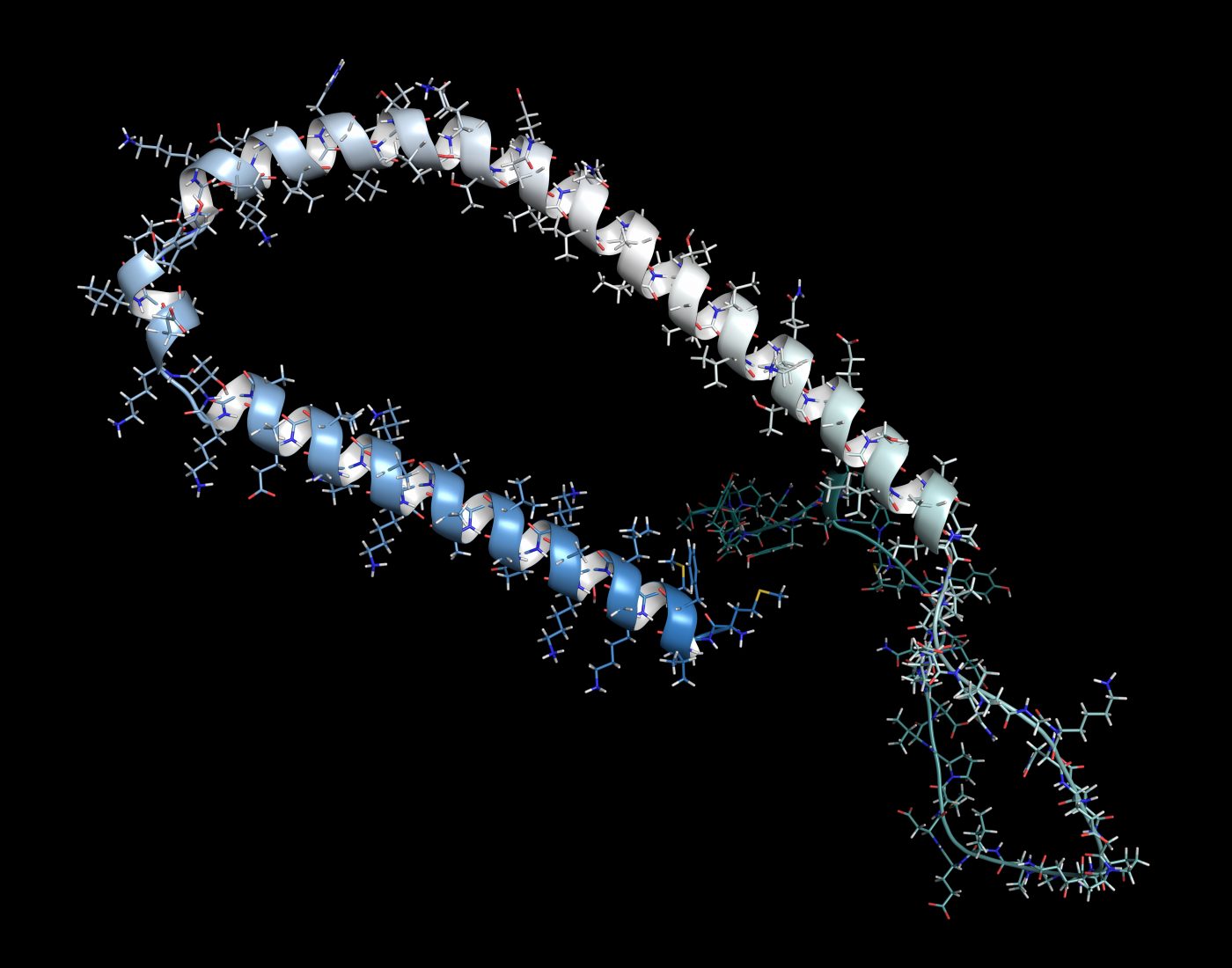Scientists Observe Structure of Protein That Plays Major Role in Huntington’s Disease, Opening Door to Finding Cause and Treatments

Researchers have for the first time visualized the structure of the protein α-synuclein in healthy living cells, allowing a better understanding of why the protein forms aggregates in Huntington’s disease (HD) and other neurodegenerative diseases.
Despite α-synuclein being a known component of amyloid aggregates forming in the brains of HD, Parkinson’s and Alzheimer’s patients, up until now, no one had managed to observe it in a healthy environment. Researchers know that α-synuclein forms a very specific structure, generating particular patterns in the amyoloid aggregates, but when isolated, the purified protein possesses nothing that might resemble a structure.
To understand pathological changes in disease, researchers need to know the proteins’ original, healthy state first. However, the lack of insight into α-synuclein’s natural structure has hampered HD research. Leibniz-Institut für Molekulare Pharmakologie (FMP) researchers used a combination of nuclear magnetic resonance spectroscopy (NMR) and electron paramagnetic resonance spectroscopy (EPR), to determine the structure and visualize the protein in both neuronal and non-neuronal cells.
In their study titled “Structural disorder of monomeric α-synuclein persists in mammalian cells” published in the journal Nature, the team describes that to their surprise, the unstructured state previously observed in isolated proteins was the natural state of α-synuclein in healthy cells. D. Philipp Selenko, head of the In-cell NMR Spectroscopy research group, stated in a press release, “We discovered the unstructured state that the protein also has in the purified state. This is actually rather surprising, because it was inconceivable up to now that such an unstructured state can survive at all in a cellular milieu.”
While apparently unstructured, the images show that the NAC region – involved in aggregate formation – is protected so that foreign molecules can not penetrate it. Why α-synuclein looses this ability to protect the NAC region in the development of neurodegenerative disease is not known and will be the focus of future studies by the group.
“In the diseased state, this protein must change structurally to such an extent that the NAC becomes accessible for other molecules, so that these regions can accumulate, start to grow, and thus form the amyloid structures,” Selenko said.
Investigating further, the team introduced damage in several places in the protein to resemble the variant found in aged cells. When the protein was introduced into a young cell, the cellular machinery managed to repair it in some places. The most important region for protein function was, however, left unrepaired, according to a second article by the group, titled “Intracellular repair of oxidation-damaged α-synuclein fails to target C-terminal modification sites” and published in the journal Nature Communications.
The researchers now plan to create artificially aged cells and hope to observe how α-synuclein changes, hoping to reconstruct the state corresponding to the origin of the diseased state. “We hope to watch the protein as the protection of the NAC region is gradually lost and how it begins to form amyloid-like structures,” Selenko said.
The team also intends to study what causes the repair mechanisms to fail, hoping that one day the neurodegenerative process can be preventable, “With our discovery of the starting state of the protein, we have taken the decisive first step in this direction,” Selenko said.






